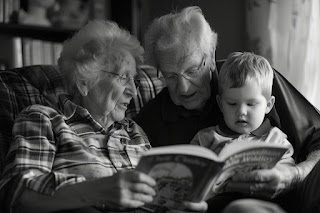Exploring St. Patrick's Day and the Rich Tapestry of Cultural Celebrations In School
As March rolls around, vibrant hues of green start adorning cities worldwide, marking the arrival of St. Patrick's Day. This jubilant celebration, rooted in Irish heritage, transcends borders, captivating hearts and minds far beyond the emerald shores of Ireland. But why do we celebrate St. Patrick's Day, and what significance does it hold in our increasingly interconnected world?
St. Patrick's Day, celebrated annually on March 17th, commemorates the patron saint of Ireland, St. Patrick, who is credited with bringing Christianity to the island. What began as a religious feast day has evolved into a global celebration of Irish culture, marked by parades, music, dancing, and, of course, the iconic shamrock.
But beyond the revelry lies a deeper significance. St. Patrick's Day serves as a reminder of the importance of cultural diversity and the richness it brings to our lives. Just as Ireland celebrates St. Patrick, other nations within the United Kingdom cherish their own patron saints with equal fervour.
In England, the tale of St. George and the dragon is ingrained in folklore, symbolising courage and heroism. St. David's Day in Wales is a celebration of Welsh identity and culture, honouring the patron saint who founded monastic settlements and spread Christianity in the sixth century. Scotland pays homage to St. Andrew, known for his compassion and humility, through St. Andrew's Day festivities. Each of these celebrations is deeply rooted in tradition, weaving a tapestry of stories that connect past and present.
In schools across the United Kingdom, exploring these cultural celebrations offers a valuable opportunity for learning and understanding. From a young age, children are introduced to the geography and heritage of the four constituent countries, fostering a sense of belonging and appreciation for diversity. Learning about St. Patrick's Day alongside St. George's, St. David's, and St. Andrew's Days provides a holistic view of the United Kingdom's rich cultural landscape.
Moreover, these traditions serve as bridges, connecting communities and fostering empathy and respect for different cultures. By delving into the folklore and traditions associated with each patron saint, children gain insights into the values and beliefs that have shaped societies over centuries.
Additionally, these celebrations highlight the interconnectedness of cultures in our globalised world. Just as St. Patrick's Day is celebrated beyond the borders of Ireland, cultural festivals from around the world find resonance in diverse communities, fostering a sense of unity amidst diversity.
As we raise a toast to St. Patrick and don our finest shades of green, let us also celebrate the kaleidoscope of cultures that enrich our lives. Whether it's the spirited parades of Dublin, the dragon-slaying tales of England, the leek-wearing festivities of Wales, or the tartan-clad revelries of Scotland, each celebration offers a glimpse into the soul of a nation.
So, this St. Patrick's Day, let us embrace the spirit of unity and diversity, honouring not only the patron saint of Ireland but also the myriad cultures that make our world a vibrant tapestry of traditions and stories. Sláinte!





Comments
Post a Comment
Hi there, Thanks for taking the time to share.